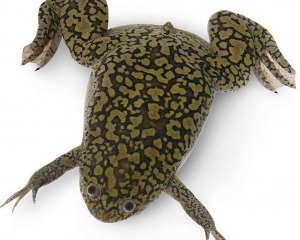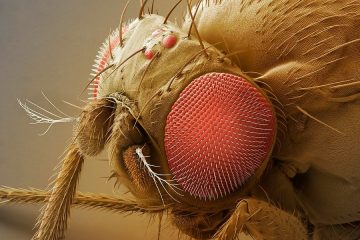Have you ever wondered why you and your siblings look a lot alike and very much different from others? And even though you share many similarities with your family members, why are you still unique and different from the others? What makes you, YOU? And what makes me, ME? You must have probably asked these questions multiple times from your parents when you were kids and still might have no clue as to how that happens. It is the DNA that differentiates you and me AND all the other groups of organisms!
We inherit half of our genetic material from our mother and a half from our father. It makes us similar to our family members but not identical to them. DNA is a molecule composed of two polynucleotide chains that coil around each other to form a double helix. It is a long molecule made up of four nucleotides called Adenine, Guanine, Thymine, and Cytosine. Each DNA molecule is associated with numerous proteins such as histones and tightly packed into a chromosome. The number of chromosomes is unique from species to species. For instance, HUMANS have 46 chromosomes! DOGS have 78 Chromosomes!
Chimpanzees are known to be the closest relatives of human beings. If we line up human and chimpanzee genomes, it will show that 96% of the DNA of humans and chimpanzees are identical. So, it means that only 1% of our DNA is contributing to making us, humans. Humans and chimps have a lot of similar features as well as many differences. Both humans and chimps are considered primates. But humans are bipedal, and chimps walk with all four limbs. Also, chimps have shorter life spans and smaller brains compared to humans. Most importantly, chimpanzees can learn words but not grasp language. So, does it make sense that 1% of DNA contributes to all these differences between humans and chimps!
The human genome is about 3.2 billion base pairs long. So, 1% of the whole genome accounts for a large number of base pairs. It is around 32 MILLION base pairs! Hence, although humans differ from chimps in a very minute percentage of DNA, they differ by a large number of base pairs. So, now it makes sense that 1% of DNA is a significant amount that can contribute to the differences between humans and chimps. Genetic variations between individuals or species occur due to mutations, polymorphism, gene interactions, linkages, and many more.
Mutations mainly arise due to errors associated with DNA repair mechanisms, due to abnormal environmental conditions, mutagens like radiation, chemicals, heavy metals, etc., gene duplication, through insertions, deletions, and substitutions of nucleotides. Most of these mutations have no overall effect. And some can be inherited from one generation to another. If the mutations are advantageous, they will be selected and survive by natural selection. It accounts for the divergence and evolution of novel species from ancestral species. Evolutionary change is a slow process (approximately one base change per billion years, but the rate may change from species to species). That is why humans and chimpanzees share a large percentage of DNA.
But it is not just nucleotides that determine the differences between two species or individuals. Instead, it is the genes that determine many traits expressed by living organisms. Genes are stretches of nucleotide sequences that code for a specific protein or RNA. These encoded proteins or gene products are the factors that influence the features of individuals such as hair color, skin color, height, genetic diseases, and even metabolic processes. Coming into chimpanzees again, we humans share several genes with them: encoding body hair, brain functions, etc.

The main objective of the human genome project (research program whose goal was the complete mapping and understanding of all the genes of human beings) was to identify and sequence all the genes in the genome and identify the genes that make us unique. Scientists have found that 99.9% of the DNA is identical between any two human beings. Human genes will usually differ in about 1 to 3 nucleotides from person to person. It is enough to make changes in amino acid sequences, structures, and functions of proteins.
However, scientists have found that we differ from each other mainly not because of our genes but because of how they are regulated. For instance, if mutations occur at gene regulatory regions situated next to genes, it may switch on or off the expression of that particular gene. Also, even though the human genome contains about 20,000 to 25,000 genes, post-transcriptional modifications and alternative splicing can produce more proteins than the existing number of genes. In a single cell, only a fraction of the genes will be expressed. Different kinds of cells, body parts, and development stages produce various proteins. And even the productivity of proteins and complex interactions between proteins play a role. So, it is not just simply the DNA sequence that contributes to making each of us unique.
Is every human trait entirely determined genetically? The answer is NO! The genomes of organisms are very complicated. Some traits are controlled by a single gene. While some are controlled by multiple genes. In addition, your environmental factors and lifestyle choices may also affect gene activities. The food you eat, the activities you engage in, and the duration of sleep all influence how your genome is expressed.
For instance, ‘Usain Bolt’ is considered the world’s fastest person not just because of his genes but also because of his training. If a plant that normally grows in lowlands is planted at a high altitude, it will acquire new characteristics that are not seen in the first place. All these changes are done to adapt to the novel environmental conditions. Furthermore, identical twins have the same genetic complement. But still, there are differences between them that develop them into two distinct individuals.
We differ from each other not just in shape, color, and size, but also in our capabilities and behaviors. Who wants a world full of identical organisms? GUESS NO ONE! So, isn’t it amazing to become unique?
Written By:
Sakalya De Silva,
3rd Year Undergraduate,
Plant Biotechnology Honors,
Department of Plant Sciences,
Faculty of Science,
University of Colombo.
References:
- What Makes Us Unique? (2016, April 14). Gene Decode. https://www.gene-decode.com/en/facts-about-genes/what-makes-us-unique/
- Unequal by nature: a geneticist’s perspective on human differences. (n.d.). American Academy of Arts & Sciences. https://www.amacad.org/publication/unequal-nature-geneticists-perspective-human-differences
- Stewart, L. (2020, August 18). 5 Scientific Reasons Why You Are Totally Unique. Atlas Biomed Blog | Take Control of Your Health with No-Nonsense News on Lifestyle, Gut Microbes and Genetics. https://atlasbiomed.com/blog/five-scientific-reasons-why-you-are-totally-unique/
Image Courtesy:
- Title Image: https://shutr.bz/3jXL853
- Content Image: https://bit.ly/3pOOefg



0 Comments